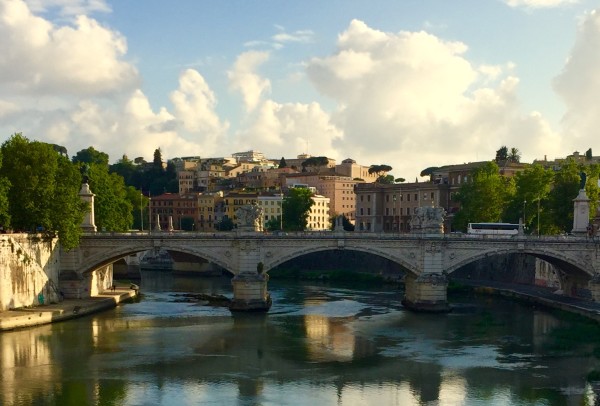
You’ve wanted to go to Italy your whole life, and now the dream is coming true.
You can already taste the fresh mozzarella in Rome and hear the soft, rhythmic splash of the gondolier’s oar as it slowly propels you through the quiet, moonlit canals of Venice.
I just had that dream myself, but with a slight twist. I, too, was heading to Italy, but for me, it wasn’t going to be my first time there. Instead, it was going to be my daughter’s first time, and I wanted her to fall in love with Italy just like I had.
I could picture us at a sidewalk cafe in the shadow of the Pantheon, me sipping an espresso and her a lemon granita. We’d toss coins in the Trevi fountain, marvel at the Sistine Chapel.
What I didn’t envision were swarms of street vendors hawking light-up toys, endless tour groups following their guides like giant amoebas, and photo opportunities killed by the ubiquitous selfie stick.
But that was the scene we found ourselves in when we arrived in Rome. It was then I realized that the reason we had booked our trip to Europe at this particular time was the same reason shared by thousands of other people. For the first time in years, the euro is lower than many other currencies, making the exchange rate, dare I say it, a bargain.
Being a top tourist destination anyway, Italy under weak economic conditions is a lure that’s hard to resist. As with any crowded destination, trip planning requires a little extra thought.
Fear not, fellow traveler, I am here to help. Allow me to share my experiences, so that you can avoid learning the hard way.
Intown or Beyond
First of all, where to stay. You can go one of two ways with lodging. You can stay right in the heart of things where you’ll be close to most of the main sights. The downside is, well, you’re right in the heart of things, and that’s where everyone else is throughout the day. Restaurants fill up, kitschy stores abound, and you get the tourist’s eye view.
Another price you pay is just that: the price. Even modest hotels tend to cost more here than those a little further from the middle.
On the plus side, if you prefer five-star luxury, this is usually where you’ll find it, and the immediate environs of top hotels are generally free of souvenir stalls. When you want to wrap yourself in comfort, this is the area.
Being central not only saves steps, it allows you to get to the main sights before everyone else. When long lines are inevitable, being first is definitely a plus.
The second option is staying further out. Lodging costs less, there are fewer people, and you get more of a sense of “real-life” Italy.
In Rome, I’ve done it both ways and enjoyed myself. This time, I ventured further afield and put down roots on the other side of the Tiber, the river that runs through Rome, in the neighborhood of Trastevere. This was by pure chance: I had waited too long to book so my options were limited, and I’d wanted to see Trastevere anyway.
My delay in making reservations turned out to be a stroke of luck. An internet search had uncovered a 16th-century cloister that had been transformed into a small inn. I couldn’t resist the idea of an ancient monastery equipped with wifi, and clicked the “reserve now” link.
The inn arranged for a driver to pick us up and, as he turned off the busy road from the airport into a maze of narrow, cobblestoned streets, I could feel the weariness of my overnight flight lift. When the car stopped in front of a building adorned with leafy green vines and bright Mediterranean flowers, my daughter and I looked at each other and smiled. Inside proved to be just as charming and welcoming.
The neighborhood exuded the same warm feeling. In the evening, families gathered in the piazza, later replaced by groups of laughing students on summer vacation. Waiters came to recognize us. Trastevere and our little inn felt like home when we returned after a day of exploring.
On the other hand, it was a 30-minute walk to the Spanish Steps and a 25-minute one to the Colosseum. Each day’s itinerary took longer than it would have had we stayed closer to the sights we wanted to visit. Both of us had occasional bouts of complaining. But taxis were plentiful, and if we were lost, in a rush, or our feet were begging for compassion, we’d hop in a cab.
Our experience in Venice wasn’t quite the same because compared to other cities, Venice is relatively small. Nothing is that far from anything: it’s all contained in a maze of canals and cobblestones. The question of staying in a central zone or further out doesn’t apply.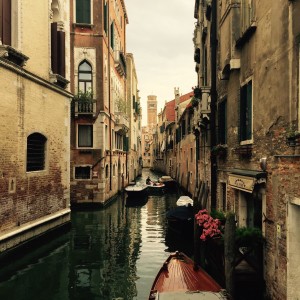
That said, you’ll find yourself in a homier, less crowded area if you’re not in a prime spot. And, like Rome, that’s where you’ll find the luxury lodging. Case in point: It was on the Grand Canal that George Clooney held his lavish wedding reception at the seven-star (seven?!) Aman Canal Grande Hotel. Opulence is found on the most famous of canals and not on a friendly side street.
For our time on the Amalfi Coast, we chose Ravello as our home base. Being near the end of the famous coastal drive and inland, Ravello, even with most accommodations booked, was far less crowded than towns along the water like Positano and Amalfi.
This time, the pros and cons of each location were different. The trade-off for our peaceful setting with its glorious gardens and spectacular views was the extra 25 minutes it took to go to and from by taxi or bus.
It’s up to you whether to stay close or further out. Either way, if you consider the pros and cons of each, you can decide what home base is best for you.
“I’ll Take That Table”
If there are specific restaurants where you want to go, one word: reservations. Even if it’s a small, informal spot, ask whether they take reservations. You’ll be surprised how many places do, and it doesn’t hurt to ask. When it’s a place you have your heart set on, don’t risk it.
If you have no such place, or simply prefer not to be tied to a certain time, not having reservations does not mean no dinner. Italy is a nation of food lovers and they take pride in their cuisine. You will not go hungry.
When all the central restaurants look full, head down the side streets. You’ll find fewer people and get away from menus offering the standard tourist fare. I look for a place where the majority of diners are speaking Italian.
One night, we happened upon a tiny spot with just four tables outside. The aromas that emanated from the open door stopped us in our tracks, and we claimed the last table, next to a group of jovial men immersed in animated conversation and drinking red wine. (And no one does animated more than a group of Italian men drinking red wine.) Their energy filled the air and, as I ate my home-made pasta, I felt like I was really inside the neighborhood. (I say “I” and not “we” because my daughter was busy trying to get on the wifi.)
Later, in Capri, we opted for more upscale restaurants, where we experienced a different side of Italy, one with exquisitely prepared food, politely attendant waiters, and stylish diners who provided fodder for fashion discussion over dinner.
Because I felt like roaming schedule-free on our first day there, I decided not to make dinner reservations.
I should have known better.
We enjoyed a carefree day of boating and exploring Capri’s famous grottos, marveling at the glowing turquoise water. We casually shopped in the boutiques and sipped late afternoon drinks in the square. When it began to get dark, we strolled uphill to our hotel and changed for dinner.
And then hunger hit, in that way where all is fine one moment and then, in a flash, it’s not. Your stomach suddenly announces its emptiness, and you’re certain that starvation is imminent. Dinner suddenly becomes an emergency.
And so it was with us. Now hurrying, we went from one restaurant to another, meeting with the same scenario at each. “Reservations?” the maître’d would ask. Shamefaced, I’d shake my head and mumble, “No.” Each time, the choice was between a long wait or forging on. We kept going.
A kindly maitre’d ultimately took pity on us and took us in, even seating us at a prime sea view table that I certainly didn’t deserve, given my foolishness. Would it really have affected the relaxed pleasure of the day if we’d had a reservation waiting at the end? Arguably, it would have made it better.
Moral of the story: Do not let an aversion to commitment stand in the way of dinner reservations, especially when on a small island in high season.
Timing is Everything
It was our first night in Rome and we were firmly in the grasp of Eastern Standard Time. Determined to stay up, we made it to 11p.m. and then collapsed into bed without setting an alarm. We were already on Italian time, I figured – we were time zone champions. We’d just wake up on our own and start the day.
You can tell the way this is going. I didn’t open my eyes until, wait for it, 3:15 p.m. “Wake up!” I screeched at my still-sleeping teenager. “Our whole day is almost gone! We’re not going to have time to do anything!”
Soon, we were racing down the cobblestoned street towards … what? Where was I taking us? I stopped to ponder the situation. It looked bleak.
“Let’s go the Colosseum,” I said, halfheartedly. “We can at least walk by it.”
As it turned out, our Rip Van Winkel ways had not only been a gift of sleep, but a gift of timing as well.
Only a smattering of people was milling about when we got there. I decided to look for a sign by the ticket window to check the hours for our return trip. Turned out that the lack of line didn’t mean the Colosseum was closed, it was actually open for another hour. Plenty of time.
The soft light of the afternoon sun slanted in the openings of the ancient building as we walked through it. Unhurried – and unharried – we noticed details we would’t have had we been making our way around the circular passages with several hundred other Colosseum-goers. I spotted what looked like graffiti chiseled into the wall in Latin. Maybe it wasn’t, but I prefer to believe that it was created by a Roman Romeo who diligently carved his love into the stone.
Before the Colosseum incident, I always believed in getting to popular venues right when they opened, and I still do.
But now I see possibility in the other end of the day. Going late might even be better than early since everyone else is leaving, clearing the way for you. Not only that, you get to sleep in. Way, way in.
A few other timing tips: The Vatican Museums, Sistine Chapel, and St. Peter’s Cathedral draw over five million visitors a year. The line for tickets can extend for blocks. Pre-purchase your tickets online and you can skip the line to buy them. You will still need to get in a line to pick them up, but it’s shorter.
If you go with a tour group or a guide, your ticket is taken care of and you can go straight in the guide entrance. However, this is not as hassle-free as it might sound. My daughter and I had started out with our own online tickets and ended up joining one of many haphazardly-formed groups comprised of people who, like us, had just learned about the faster guide entrance from the competing tour solicitors that were everywhere.The problem was that our group’s organizer couldn’t resist adding people. By the time we embarked, our number approached 100. Suffice it to say that we were an awkward mass of humanity amidst an even larger mass, all being herded towards the Sistine Chapel. This sort of situation tends not to engender the most benevolent of moods.
Another live-and-learn piece of knowledge: because the Vatican is closed on Sunday, avoid going on Monday, when the backlog of would-be visitors from Sunday join the regular number of daily visitors on Monday. Take it from one who bought tickets for noon on Monday.Saturdays are also busy. On Wednesdays, tens of thousands fill St. Peter’s Square for the papal audience. I’d shoot for a Tuesday or Thursday.
In Venice, St. Mark’s Square is the landmark that requires crowd-avoidance tactics. Overlooking the Venetian Lagoon and flanked by the magnificent St. Mark’s Basilica with its soaring spires and multiple domes, the pink marbled Palace of the Doges, and the long arched arcade of shops and offices, Piazza San Marco is indisputably one of the world’s most beautiful squares.
On previous trips, I had been there during the day and encountered only moderate crowds. Once, on a cold and misty morning, I was the only one there. But on this trip, I was there at mid-day, and the grand square was packed. We just wanted to leave and find some gelato.
Wait until after dark to go, and you will see St. Mark’s Square at its glorious best. Lit by glowing lanterns, the vast open space is magical. Cafe tables extend beyond the arcade, and small string ensembles fill the air with sweet music that suggests times gone by. Have I convinced you? See the Basilica and the Doges Palace during the day when they are open. Experience St. Mark’s Square at night.
Be Flexible
While planning is important, don’t be so wed to your schedule that you determinedly proceed even if it means waiting in a long line or feeling claustrophobic. While going with the flow is generally a good approach to life, sometimes not going with the flow is a better idea. If you see a huge group, turn around. Even though you want to see as much as possible on your trip, be willing to let something go if the experience is not going to be something you’ll remember fondly.
Take the Road Less Traveled
Keep alternatives in mind for those times when you want to be far from the madding crowd. In Venice, take a vaporetta – something like a bus on water – across the lagoon to the glass-making island of Murano, home of the distinctive glass that bears the same name.
Part fascinating, part kitschy, the island’s small scale and single purpose makes for a slower pace, not to mention the opportunity to get some gifts to take home from the small shops lining the canal. Touristy? Yes, but it’s hand-crafted glass creations for sale, not snow globes or T-shirts.
And then there’s Lido. From the instant you step off the vaporetto onto the narrow, seven-mile-long sandbar, you know that somehow, the 35-minute boat ride has taken you worlds away from the busy pier you just left.
The air is softer here, and a light breeze blows in from the Adriatic Sea. Although we were there on a summer day in high season, it was quiet, almost hushed. Tropical flowers and palm trees added to the tranquility.
Cafes, shops, grand hotels, and villas line the main boulevard, which leads to beaches that stretch along the other side of the skinny strip of land, no more than half a mile at its widest. In the 1920s, Lido was popular with Italy’s high society, and it retains an aristocratic atmosphere, in a faded glory kind of way.
If you are on the Amalfi Coast craving quiet, rise above the bustle and hike the breathtaking trail known as the “Path of the Gods.” Starting from the village of Bomerano, at 2,083 feet above sea level, the trail descends through gorges and cliffs, offering spectacular views along the way.It terminates with 1,700 stone steps down to Positano. Only if you are in top form would I recommend going both ways. We started at the top and, trust me, that is the way to go. You get plenty of upward climbing on the steep, rocky sections of the path.
On Capri, the island’s second town, Anacapri, offers several activities to check out while ferries shuttle daytrippers to and from its more upscale sister. Away from the central street that’s fairly bursting with souvenir shops, you’ll find small stucco houses with individual vegetable gardens.
The famous Blue Grotto is here, with a couple of low-key hotels and restaurants above it. (Tip: Do not follow your offspring from the top of the town down a dirt path that she’s certain will bring you to a sea-side restaurant. Unless, of course, you want to get some exercise before lunch. Go via the main road in a car.)
Anacapri also has a chairlift that takes you to the summit of Mount Solaro, the highest point on the island, for an aerial view of Capri town and a panorama of turquoise sea.
After that, you can tour the lovely Villa San Michele.
I could keep going, but you get the idea. No matter where you go, you can always find a way to avoid crowds – it just takes a little planning and an openness to new possibilities. And in Italy, the possibilities are endless.
[/et_pb_text][/et_pb_column][/et_pb_row][/et_pb_section]

![By High Contrast (Own work) [CC BY 3.0 de (http://creativecommons.org/licenses/by/3.0/de/deed.en)], via Wikimedia Commons Trevi_fountain_in_Rome](https://epicurean-traveler.com/wp-content/uploads/2015/08/Trevi_fountain_in_Rome-300x225.jpg)
![By Zorro2212 (Own work) [CC BY-SA 3.0 (http://creativecommons.org/licenses/by-sa/3.0)], via Wikimedia Commons Rome_souvenirs_shop](https://epicurean-traveler.com/wp-content/uploads/2015/08/Rome_souvenirs_shop-300x201.jpg)
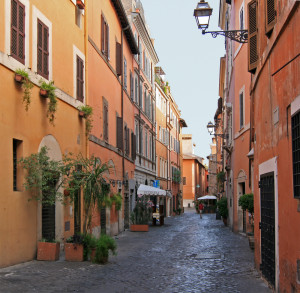
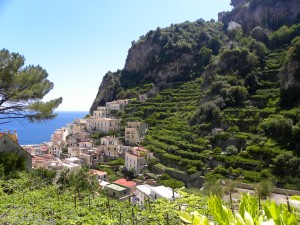
![© Joadl CC BY-SA 3.0 at (http://creativecommons.org/licenses/by-sa/3.0/at/deed.en)], via Wikimedia Commons](https://epicurean-traveler.com/wp-content/uploads/2015/08/Via_della_Lungaretta_Trastevere_Roma_2013_03-300x225.jpg)
![By Nenita Casuga [CC BY 2.0 (http://creativecommons.org/licenses/by/2.0)], via Wikimedia Commons Natural_Arch_Capri_Italy](https://epicurean-traveler.com/wp-content/uploads/2015/08/Natural_Arch_Capri_Italy1-200x300.jpg)
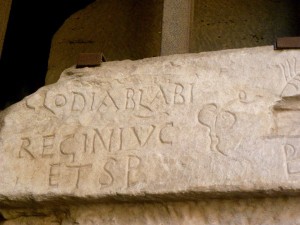
![By Joonas Lyytinen (Own work) [CC BY 2.5 (http://creativecommons.org/licenses/by/2.5)], via Wikimedia Commons Rooma_2006_080](https://epicurean-traveler.com/wp-content/uploads/2015/08/Rooma_2006_080-225x300.jpg)
![By daryl_mitchell from Saskatoon, Saskatchewan, Canada (Crushing Crowds) [CC BY-SA 2.0 (http://creativecommons.org/licenses/by-sa/2.0)], via Wikimedia Commons Crushing_Crowds_(15427859790)-1](https://epicurean-traveler.com/wp-content/uploads/2015/08/Crushing_Crowds_15427859790-11-225x300.jpg)
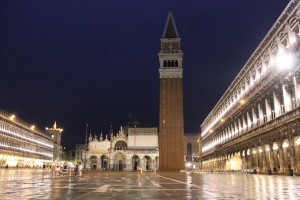
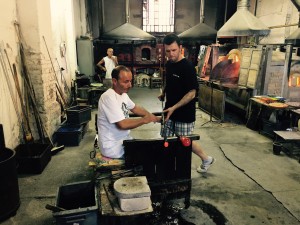
![By Mihael Grmek (Own work) [CC BY-SA 4.0 (http://creativecommons.org/licenses/by-sa/4.0)], via Wikimedia Commons Sentiero_degli_Dei_01-1](https://epicurean-traveler.com/wp-content/uploads/2015/08/Sentiero_degli_Dei_01-1-300x200.jpg)
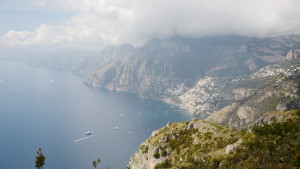
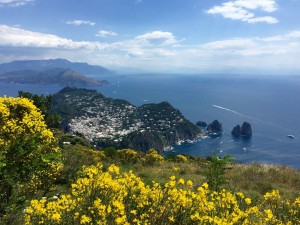
Well done. Love the part on “The Path of the Gods”-great tip.